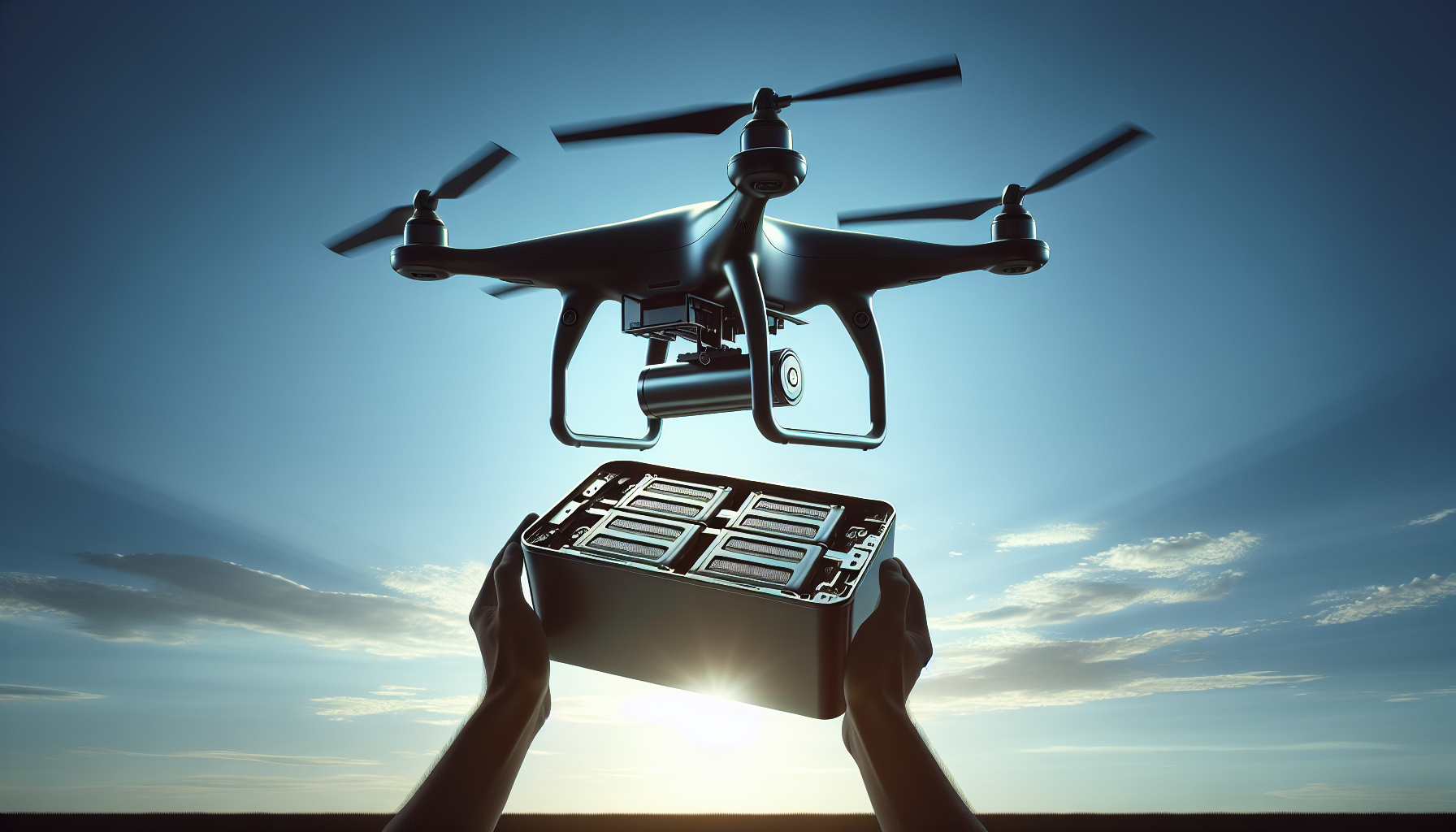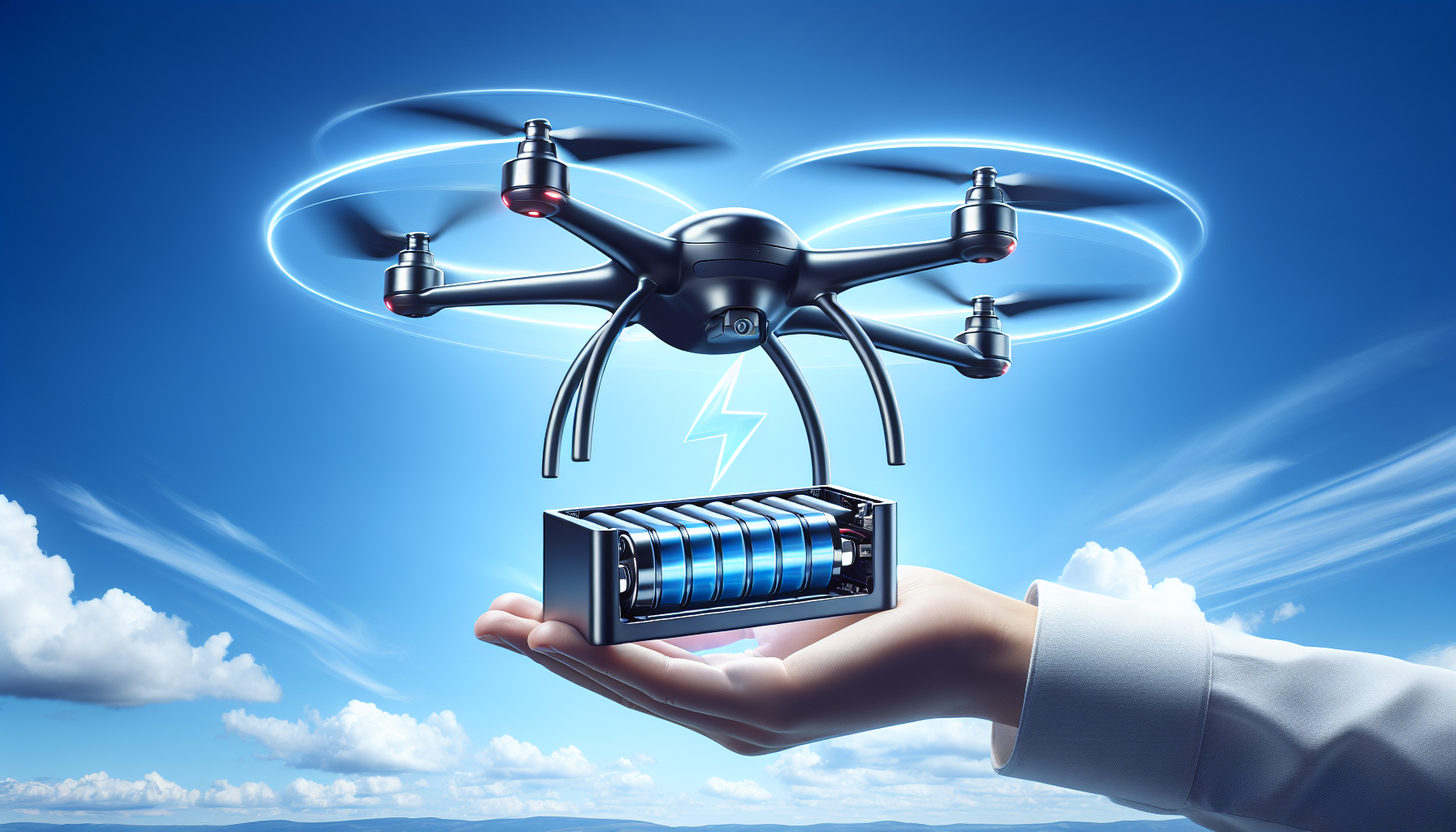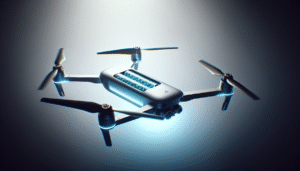Drone technology continues to evolve, pushing boundaries to extend flight times and minimize operational downtime efficiently. It’s a thought that flutters around in my mind whenever I see a drone slicing through the sky, its propellers humming with the promise of futuristic convenience. The modern drone has already become an indispensable asset across various industries, including film and entertainment, agriculture, and logistics. But as versatile as they are, drones face one significant limitation: battery life.
This is where swappable battery systems come into the picture, potentially changing the game for long-endurance drone operations. Let’s take a closer look at how this concept works and whether it could indeed be the future of drone technology.

What are Swappable Battery Systems?
Imagine this scenario: you’re flying your drone on a critical mission, and just when you need it most, you notice the dreaded low battery warning flashing. What if, instead of having to land the drone and wait for a recharge, you could land it, swap out the depleted battery with a fully charged one, and continue with your mission almost immediately? That’s the appeal of swappable battery systems.
Swappable battery systems enable users to quickly and efficiently replace a drone’s battery without waiting for the original battery to recharge. This system not only saves time but also increases the drone’s availability for extended operations, granting it nearly continuous flight capabilities when multiple batteries are on hand.
The Technology Behind Swappable Battery Systems
Swappable battery systems are more than just an exercise in convenience; they are a culmination of several technological advancements in battery design and drone interfaces. These systems require:
- Standardized Battery Connectors: Drones require compatible battery connectors that facilitate quick and seamless swapping.
- Advanced Charging Solutions: To support rapid swapping, batteries must charge quickly, often facilitated with high-efficiency charging stations.
- Battery Management Systems (BMS): These systems monitor the battery’s health and ensure safe energy transfer, optimizing charging cycles and extending battery life.
Understanding Battery Management Systems (BMS)
Battery management systems are pivotal in ensuring not only the health of swappable batteries but also their safety. A good BMS monitors the battery’s voltage, temperature, current, and state of charge. It provides vital data that alerts users when a battery is nearing failure or requires replacement, offering an additional layer of safety and reliability. This kind of intelligent monitoring can make a critical difference, especially in long-endurance missions.

Benefits of Swappable Battery Systems
The benefits of integrating swappable battery systems into drone operations are as varied as they are significant:
- Extended Flight Times: By minimizing downtime, drones can achieve longer operational times.
- Increased Productivity: Quick battery swapping facilitates more continuous use, enhancing efficiency in commercial applications.
- Improved Safety: Less rushed and panic-inducing landings when a battery is low since swaps can be planned.
- Cost Effectiveness: While the upfront investment might be higher, the long-term benefits of reduced downtime can lead to cost savings.
These benefits paint an optimistic picture of what’s possible. Drones equipped with swappable battery systems could ease operations across numerous sectors, from emergency services requiring immediate response times to agricultural drones surveying large swathes of farmland.
Challenges in Implementing Swappable Battery Systems
However, not everything is as idyllic as it seems. There are several challenges that manufacturers and operators face in making swappable battery systems a universal standard:
Compatibility and Standardization Issues
One of the key problems is ensuring that batteries are compatible across different drone models. Like many other technological ecosystems, the drone industry has a long history of manufacturers creating proprietary parts. For swappable battery systems to become truly effective, a shift towards standardized technology is essential.
Weight and Design Constraints
Every gram counts in aviation, including with drones. Swappable systems might require additional connection mechanisms or casing, potentially adding weight and thus reducing flight efficiency. Designing a swappable system that doesn’t compromise the drone’s aerodynamic profile or payload capabilities is crucial.
Cost Considerations
For a user or company, the initial cost of investing in additional batteries and compatible charging stations might be prohibitive, especially for small businesses or hobbyists. It’s essential to weigh the initial investment against the long-term benefits of maintenance and operational efficiency.
The Role of Swappable Batteries in Commercial Applications
Now, let’s take a deeper look at how swappable battery systems can enhance specific industries:
Agriculture
For farmers using drones to monitor crop health, these drones need to cover large territories repeatedly. Traditional battery limits mean frequent landings for recharging, disrupting the flow of operations. With swappable systems, a farmer can swap a battery in minutes, allowing the drone to continue its surveying tasks with minimal interruption.
Emergency Response
In emergency situations, time is of the essence. Drones equipped with cameras, sensors, or medical supplies need to operate for extended periods without the interruption of lengthy recharges. Swappable battery systems in this context can be life-saving, enabling near-continuous support during critical operations.
Film and Entertainment
Imagine the interruption in a film shoot every time a drone capturing an aerial shot needs to recharge. Having the ability to quickly swap out batteries ensures that production schedules are not hindered by technical limitations, keeping creative projects on track.
Logistics and Delivery
For delivery drones, minimizing downtime directly correlates with efficiency and service satisfaction. Swappable batteries can keep the wheels of commerce turning, supporting seamless logistics operations that rely on drones to carry small parcels over the last mile to consumers.
The Future of Drone Technology
What does the future hold for swappable battery systems in drones? As drone technology continues to evolve, we can expect to see further advancements that improve flight duration, efficiency, and safety. Here are some of the futuristic possibilities:
Innovations in Battery Chemistry
Battery technology is continually evolving, and future innovations could lead to batteries that charge faster, last longer, and weigh less. Advances in battery chemistry could complement swappable systems perfectly, creating drones that have both quick-swap capabilities and longer per-charge flight durations.
Autonomous Battery Swapping
A scene from science fiction? Perhaps not for long. Companies are already exploring solutions where drones autonomously land at charging stations equipped to swap batteries automatically. This would minimize human intervention, further optimizing drone operations.
Integration with Smart Infrastructure
Imagine a world where distributed charging and swapping stations are as ubiquitous as gas pumps. Drones could autonomously fly to these stations, swap batteries, and continue their missions—all supported by a network of intelligent charging hubs. Facilitating this kind of smart infrastructure could really make drones an integral part of urban landscapes.
Increased Standardization and Interoperability
With increased demand for swappable systems may come a concerted push towards standardization across the industry. Achieving interoperability could be the catalyst needed for swappable battery systems to become the norm, much like USB charging for mobile devices is today.
Conclusion
I find myself constantly fascinated by the potential of drone technology and the innovative strides being made within this dynamic field. Swappable battery systems offer a promising approach for enhancing the capabilities of drones, particularly in applications that require extended flight times and minimal downtime. While challenges remain—such as standardization and cost—the potential benefits and ongoing technological advancements suggest a bright future indeed.
Could swappable battery systems be the answer for the future of long-endurance drone operations? We’ll have to wait and see, but it’s clear that they are steering us toward a future where drone deployments are more efficient and impactful than ever before.
So next time you see a drone slicing through the sky, buzzing along its merry way, take a moment and consider the possibility that hidden within its structure might just be the secrets to the next big leap in drone technology: a simple and efficient swap waiting to happen.


